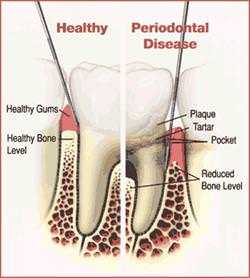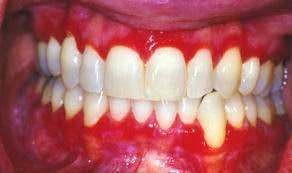One of the most important things we have to keep clean is our mouth. We have so many components in our mouths that need to be constantly cleaned to stay healthy. We all know that brushing, flossing, and using mouthwash is important, but sometimes we don’t realize what can happen when we DON’T do these things. One of the things that can happen when you don’t is gingivitis, a form of gum disease.
On most commercials about dental care they bring up maintenance of the teeth and also of the gums. On toothpastes and mouthwashes they also make sure to throw in the prevention of gum disease by using these products.
But what exactly is gum disease and gingivitis? We will discuss this in this article.
What is Gum Disease?
Gum disease is an infection of the tissues and bones that surround and support the teeth. It is also called periodontal disease. There are two types of this disease, gingivitis and periodontitis.
Periodontitis causes the gums to pull away from the teeth, leaving deep pockets where germs called bacteria can grow and damage the bone that supports the teeth.
Gums can also shrink back from the teeth. This can make the teeth look longer. Teeth may become loose, fall out, or have to be pulled out by a dentist.
What causes gum disease?
Gum disease is caused by your mouth constantly makes a clear, sticky substance called plaque that contains bacteria. The bacteria in plaque make poisons, or toxins, that irritate the gums and cause the gum tissues to break down.
If you don’t do a good job of removing plaque from your teeth, it can spread below the gums and damage the bone that supports the teeth. With time, the plaque hardens into a substance called tartar that has to be remove.
There are also factors that can make you more susceptible to getting gum disease. Things such as:
- Not cleaning teeth well
- Smoking or chewing tobacco
- Having someone in your family that has gum disease
- Having a condition that makes it harder for your body to fight infection, such as uncontrolled diabetes, AIDS, or leukemia.
- Having high levels of stress
- Having a pour diet that is low in nutrients.
What is Gingivitis?
Gingivitis is the milder form of gum disease. It is the inflammation of the gingiva or gums. When this is present you can see a red outline going around the teeth as seen in the picture to the right.
Gingivitis only affects the gums and it causes red, swollen gums that bleed easily when the teeth are brushed. When gingivitis is caught early it can be treated straight forward with an extensive regime of brushing and rinses.
If it is not treated the difficulty of reversing the problem is greatly increased; including the option of surgery.
The Symptoms
It can be hard to tell if you have gingivitis. You can begin to find out by knowing that healthy gums are pink and firm. They are fitted to the teeth and do not bleed easily. The only other indicators of gingivitis are red, swollen, tender gums and that they bleed easily from brushing and flossing.
In more severe gum disease (periodontitis), the symptoms are easier to see, such as:
- Gums that pull away or shrink from the teeth.
- Bad breath that won’t go away.
- Pus coming from the gums.
- A change in how your teeth fit together when you bite.
- Loose teeth.
How is gum disease diagnosed and treated?
To find out if you have gum disease, your dentist or dental hygienist will do an exam to look for:
- Bleeding gums.
- Hard buildups of plaque and tartar above and below the gums.
- Areas where your gums are pulling away or shrinking from your teeth.
- Pockets that have grown between your teeth and gums.
Your dentist or dental hygienist may take X-rays of your teeth to look for bone damage and other problems.
Treatment
If you have a mild case of gum disease, you will probably be able to take care of it by brushing and flossing your teeth every day and getting regular cleanings at your dentist’s office.
If your gum disease has become worse and you have periodontitis, your dentist or dental hygienist will clean your teeth using a method called root planing and scaling. This removes the plaque and tartar buildup both above and below the gum line. You may also need to take antibiotics to help get rid of the infection in your mouth. If your gum disease is severe, you may need to have surgery.
How can you prevent gum disease?
The main prevention technique is having a constant dental hygiene regime. Gingivitis can begin at any age and having a steady routine that thoroughly cleans your teeth and gums is important.
– Brushing twice or more a day is a great start to this. Sometimes you can’t set a specific time to do this so a better way to gauge this is to brush after meals. You don’t let the sugars from your foods and beverages get a chance to marinate into the teeth by doing this.
– Not only regularly brushing, but using a toothpaste with fluoride is key. Fluoride helps make the teeth stronger by removing plaque that makes the teeth weaker.
– Visit your dentist for your checkups and teeth cleanings. Your personal dental hygiene routine is important but it is also important to get them professionally cleaned as well. If the dentist sees something wrong he can act upon it quicker than you can.
– And last but NOT least, do not use tobacco products. These speed up the process of breaking down the teeth and increasing your chances as well.
Want to find out if you are at risk for gum diseases like gingivitis?
Visit the McKinney Dentist website to answer a few simple questions to get your assessment!


